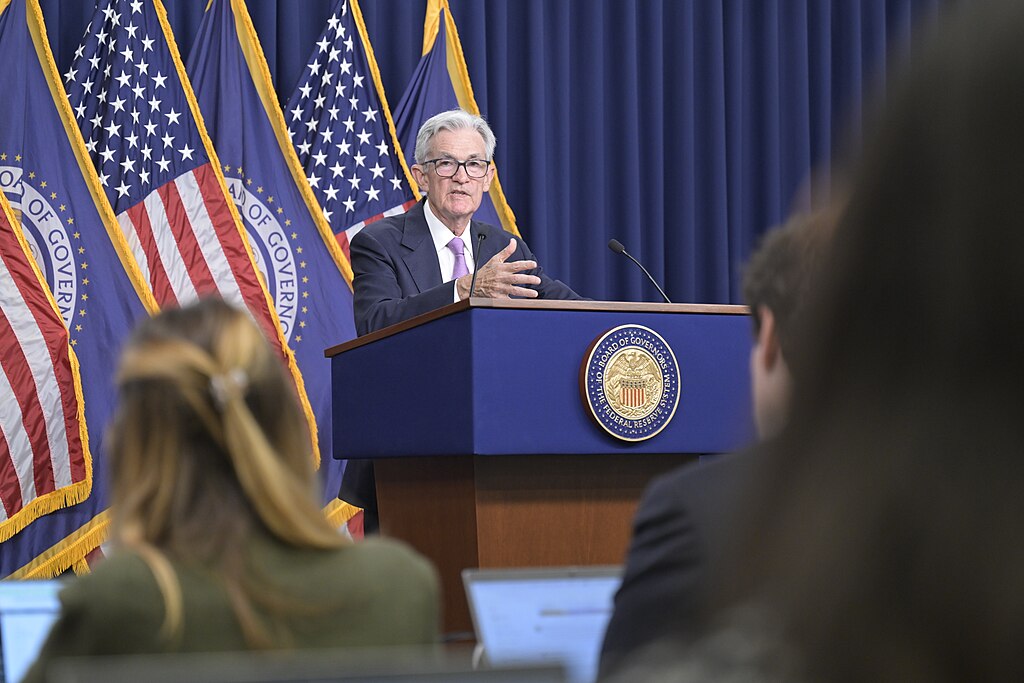U.S. Federal Reserve Chair Jerome Powell signaled a cautious stance on interest rate policy, stating that the Fed would await more economic data before making any adjustments. Speaking at the Economic Club of Chicago, Powell warned that President Donald Trump’s tariff policies could push inflation higher while slowing growth and weakening the labor market—potentially moving the economy further from the Fed’s dual mandate of stable inflation and maximum employment.
Although recent market volatility has increased, Powell said markets remain orderly and are reflecting the uncertainty surrounding trade policy, not signs of dysfunction. He emphasized there is no "Fed put," dismissing expectations that the central bank would intervene simply to stabilize falling asset prices.
Powell acknowledged the U.S. economy began the year strong, but trade tensions have created headwinds. Consumer spending is modest, import surges tied to tariff avoidance are distorting GDP data, and business sentiment is declining. Despite these pressures, Powell believes the economy remains in a "solid position" for now.
He expressed concern that tariffs are likely to drive up inflation, possibly in a sustained way, complicating the Fed’s ability to hit its 2% inflation target. While short-term inflation expectations have risen, long-term expectations remain anchored. The Fed’s current benchmark rate is 4.25%-4.50%, unchanged since December, but markets are increasingly pricing in multiple rate cuts by the end of the year.
Powell reaffirmed the Fed’s independence, stressing that monetary policy decisions will not be influenced by politics. Still, with both inflation and employment potentially drifting from target levels, the Fed may face a difficult balancing act in the months ahead as it weighs whether to lower rates or hold steady amid ongoing trade policy uncertainty.



 U.S. Dollar Slips Near Two-Month Low as Markets Await Key Jobs Data and Central Bank Decisions
U.S. Dollar Slips Near Two-Month Low as Markets Await Key Jobs Data and Central Bank Decisions  Bank of Japan Poised for Historic Rate Hike as Inflation Pressures Persist
Bank of Japan Poised for Historic Rate Hike as Inflation Pressures Persist  ASX Shares Slide After ASIC Imposes A$150 Million Capital Requirement
ASX Shares Slide After ASIC Imposes A$150 Million Capital Requirement  ETH Bulls Smash Trendline – $4,000 Next as Whale Squeeze Tightens
ETH Bulls Smash Trendline – $4,000 Next as Whale Squeeze Tightens  Evercore Reaffirms Alphabet’s Search Dominance as AI Competition Intensifies
Evercore Reaffirms Alphabet’s Search Dominance as AI Competition Intensifies  Morgan Stanley Downgrades Tesla as AI Growth Expectations Rise
Morgan Stanley Downgrades Tesla as AI Growth Expectations Rise  Asian Currencies Trade Sideways as Dollar Weakens Ahead of Key U.S. Data
Asian Currencies Trade Sideways as Dollar Weakens Ahead of Key U.S. Data  Oil Prices Slip in Asia as 2026 Supply Glut Fears and Russia-Ukraine Talks Weigh on Markets
Oil Prices Slip in Asia as 2026 Supply Glut Fears and Russia-Ukraine Talks Weigh on Markets 































